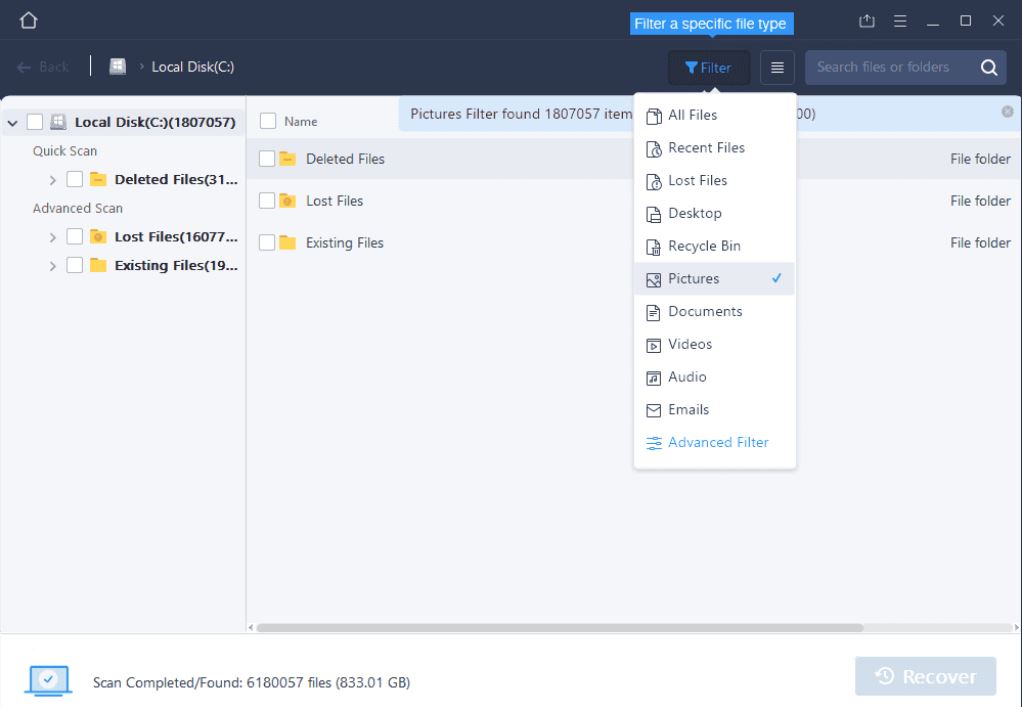SD cards are among the most convenient storage media, but it could be the most vulnerable as well. Many people are losing their files in SD cards, due to many different reasons. SD cards are so small that they can be damaged physically. Quality SD cards are actually designed to be quite tough and it could survive intense physical shocks. But if they become damaged, recovering the data could be among the most difficult tasks. SD card recovery should begin by checking the physical condition of the card. Your SD cards could be damaged due to wear and tear, immersion in water, being dropped and electrical surge when being used.
-
Wear and tear: If you insert and remove SD cards very frequently, there’s a risk that the metal contacts are damaged by wear and tear. The easiest way to fix this problem is to use an eraser to clean up the metal contact. Do it slowly and make sure that any sign of corrosion is removed. Wipe the SD card to clean it up completely. Re-insert the SD card to reader and check whether it’s readable again. If you still can’t read the SD card, there’s a possibility that the card reader is damaged. If you have a spare card reader, you could check whether your SD card is readable with it. Your chance to successfully do SD card recovery is higher if you use data recovery software.
-
Water damage: Just like any electronic device, SD cards can be susceptible to water damage. SD cards made by well-known brands are designed to be waterproof, but a prolonged water immersion may potentially cause problems. If your SD card is wet, you should use a dry, static-free cloth to remove excess moisture. Put the card in a place with dry air and if you have a dehumidifier unit, you should place the card near it for about 24 hours. Don’t put your SD card directly under sunlight, because it could be damaged due to high temperature.
-
Accidental drops: Quality SD cards should be very durable and a simple drop won’t cause any physical damage or data loss. If you SD card behaves abnormally after an accidental drop, then it could be damaged. There’s not much that you can do. Try to clean up the metal connectors and make sure there’s no dirt. If there’s something loose, try to tighten it up. Reinsert the SD card into the reader and check whether you can read the files.
-
Electrical surge: Sudden electrical spike could overwhelm the delicate circuitry inside the SD card. This may cause temporary or permanent damage to the SD card. Ground your SD card by slowly touching the metal connectors with a large metal object, like a metal bench. Reinsert the SD card into the card reader and check whether you can read the files.
Regardless of the type of physical damage, it is advisable to use EaseUS Data Recovery software to significantly enhance your chance to perform SD card recovery.
This article does not necessarily reflect the opinions of the editors or management of EconoTimes.



 SpaceX Insider Share Sale Values Company Near $800 Billion Amid IPO Speculation
SpaceX Insider Share Sale Values Company Near $800 Billion Amid IPO Speculation  Rio Tinto Signs Interim Agreement With Yinhawangka Aboriginal Group Over Pilbara Mining Operations
Rio Tinto Signs Interim Agreement With Yinhawangka Aboriginal Group Over Pilbara Mining Operations  Intel’s Testing of China-Linked Chipmaking Tools Raises U.S. National Security Concerns
Intel’s Testing of China-Linked Chipmaking Tools Raises U.S. National Security Concerns  Trello Outage Disrupts Users as Access Issues Hit Atlassian’s Work Management Platform
Trello Outage Disrupts Users as Access Issues Hit Atlassian’s Work Management Platform  Trump’s Approval of AI Chip Sales to China Triggers Bipartisan National Security Concerns
Trump’s Approval of AI Chip Sales to China Triggers Bipartisan National Security Concerns  SK Hynix Considers U.S. ADR Listing to Boost Shareholder Value Amid Rising AI Chip Demand
SK Hynix Considers U.S. ADR Listing to Boost Shareholder Value Amid Rising AI Chip Demand  ANZ Faces Legal Battle as Former CEO Shayne Elliott Sues Over A$13.5 Million Bonus Dispute
ANZ Faces Legal Battle as Former CEO Shayne Elliott Sues Over A$13.5 Million Bonus Dispute  ADB Approves $400 Million Loan to Boost Ease of Doing Business in the Philippines
ADB Approves $400 Million Loan to Boost Ease of Doing Business in the Philippines  SpaceX Edges Toward Landmark IPO as Elon Musk Confirms Plans
SpaceX Edges Toward Landmark IPO as Elon Musk Confirms Plans  Coca-Cola’s Costa Coffee Sale Faces Uncertainty as Talks With TDR Capital Hit Snag
Coca-Cola’s Costa Coffee Sale Faces Uncertainty as Talks With TDR Capital Hit Snag  SoftBank Shares Slide as Oracle’s AI Spending Plans Fuel Market Jitters
SoftBank Shares Slide as Oracle’s AI Spending Plans Fuel Market Jitters  Samsung SDI Secures Major LFP Battery Supply Deal in the U.S.
Samsung SDI Secures Major LFP Battery Supply Deal in the U.S.  Nvidia Develops New Location-Verification Technology for AI Chips
Nvidia Develops New Location-Verification Technology for AI Chips  JD.com Pledges 22 Billion Yuan Housing Support for Couriers as China’s Instant Retail Competition Heats Up
JD.com Pledges 22 Billion Yuan Housing Support for Couriers as China’s Instant Retail Competition Heats Up  Gulf Sovereign Funds Unite in Paramount–Skydance Bid for Warner Bros Discovery
Gulf Sovereign Funds Unite in Paramount–Skydance Bid for Warner Bros Discovery  China Adds Domestic AI Chips to Government Procurement List as U.S. Considers Easing Nvidia Export Curbs
China Adds Domestic AI Chips to Government Procurement List as U.S. Considers Easing Nvidia Export Curbs  Westpac Director Peter Nash Avoids Major Investor Backlash Amid ASX Scrutiny
Westpac Director Peter Nash Avoids Major Investor Backlash Amid ASX Scrutiny 































